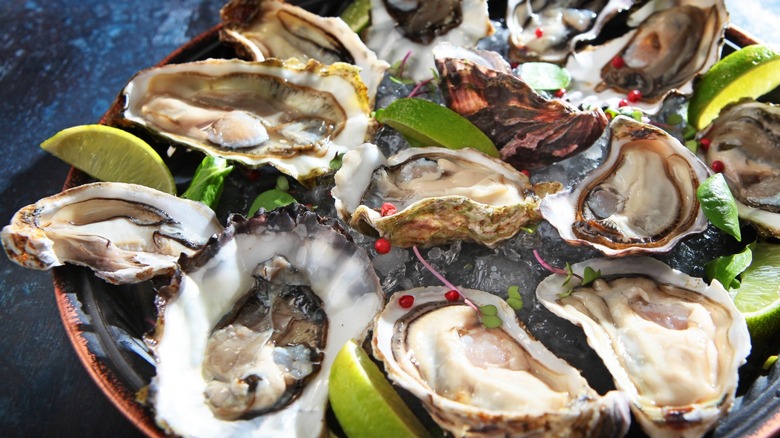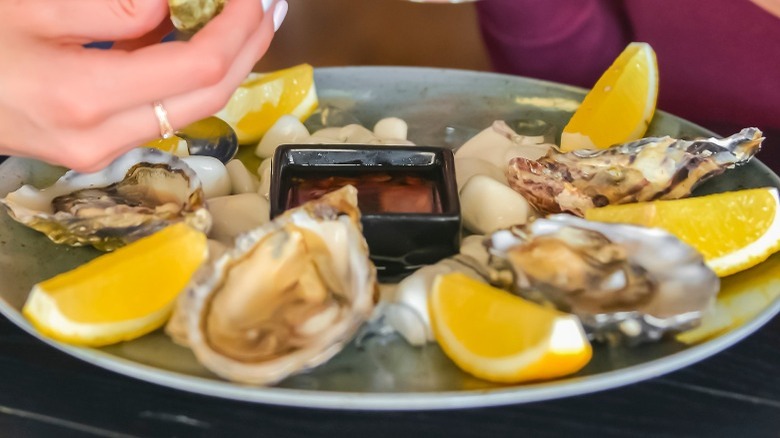Are Green Oysters Safe To Eat?
The truth about oysters is that consuming them can be dangerous. Just in August of 2022, a Florida man died from eating oysters infected with harmful bacteria according to the New York Post. In fact, the U.S. Centers for Disease Control and Prevention estimate that 100 people die from vibriosis due to eating infected oysters each year. Thus, if you're going to dine on oysters, it's wise to be aware of the risk.
The U.S. Food & Drug Administration lists myths about oyster consumption and the truth in dispelling those rumors. Among the facts about oysters is that the only way to kill off the harmful Vibrio vulnificus bacteria is to cook the oysters at a high temperature. Alcohol and hot sauce do nothing to reduce the number of bacteria that might be in the shellfish.
According to Wide Open Eats, people in the United States have been wary of eating a specific type of oyster commonly found in North Carolina that have a green coloration to them. It seems that wariness is not universal, however, and people in other parts of the world actually prize such oysters.
Should you screen for green when it comes to oysters?
Given the risk, it's hard to blame anyone for shying away from an oyster whose color looks a little off. As Wide Open Eats explains, however, the green coloration of oysters from North Carolina isn't a sign of malady in the oysters. Actually, it's a sign that the oysters have been healthy in at least one way. The green color of these oysters' gills is a result of feeding on the local algae, which is green. They add that in France, green oysters are actually more desirable than their counterparts lacking that pigment. Oyster Guide addresses the issue of safety directly, explaining that the green coloration is simply an indication of the oyster's diet. That means if nothing else, the oysters were digesting food properly during their lives.
Wide Open Eats also writes that green oysters have a creamier texture and a stronger brine taste. Atlas Obscura says restaurants within and outside of North Carolina are starting to offer them more widely due to these flavor elements.
While you may not consider green oysters the absolute best oysters in the United States, the color of their gills is no indication of whether they are safe to eat. All oysters regardless of their coloration pose a risk and according to FoodSafety.gov, the only way to ensure safety is to heat them to at least 145 degrees Fahrenheit. Going green in this way poses no greater risk than normal.

